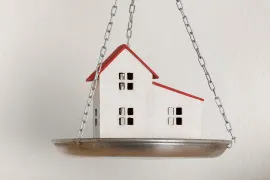Taking the nearly $700K commuted value of his pension could boost this former teacher's retirement options
It means more investment risk, but it also means flexibility and the potential for greater income
Andrew Allentuck
One of the key decisions they are grappling with is whether to take the commuted value of Leonard’s teaching pension or to wait until he is 65 and take the annual payouts of $27,456 per year. The commuted value is $692,525, which would be split between a substantial cash payout that will incur taxes and a portion that would be held in a locked-in retirement account. The analysis is complex, as we’ll see.
Debt is an issue as well. They have a $1.1 million house with a $235,273 mortgage. Their mortgage has a 14-year amortization. To shorten the repayment period to the time Leonard is 62, the monthly mortgage payment, $1,707, would have to rise by $1,025 to $2,732 per month. They pay 2.74 per cent on the existing mortgage, as much as double current rates being offered by some lenders.
Family Finance asked Derek Moran, head of Smarter Financial Planning Inc. in Kelowna, B.C., to work with the couple.
The Pension question
Leonard has the choice to either commute his pension — that is, take an upfront payout of the amount of capital invested in secure assets, mostly bonds, needed to make its annual payments — or leave the pension’s capital with professional investors as is.Commuting means getting a large sum now — one that can be reinvested or put to other uses — but giving up the security of a guaranteed annual payment upon retirement.
If he takes the commuted value, he will get $412,417 in fully taxable cash immediately while an additional $280,108 will be placed in a locked-in retirement account (LIRA). Using current Ontario tax rates, he would have to pay about $182,343 in taxes on the cash portion of the payout.
If Leonard chooses to keep the pension instead, it will pay him pay $27,456 per year, indexed to 75 per cent of the change in the provincial cost-of-living index.
The LIRA and the additional RRSP contribution will not be able to match that level of return.
If the sum of the $280,108 LIRA and the $61,404 enhanced RRSP — total $341,512 — grows at three per cent per year after inflation, it would become $472,732.48 by Leonard’s age 65, and could produce $23,415.98 per year in income, assuming continued growth at three per cent.
The investment flow would be less than the pension, but the couple would have options: they could start the payouts sooner to facilitate an early retirement and would have $201,540 of after-tax cash to make up the difference.
That money could reduce their $235,273 mortgage. Once mortgage free, household expenses would drop by $1,707 per month. With the house paid off and $1,707 freed up, money could go to Bobbi’s RRSP.
Estimating retirement income
Bobbi’s pension will be $45,012 at 65 or 15 per cent less, $38,260, at 60.If both wait until 65 to begin drawing CPP, Leonard would get $12,720 per year and Bobbi $9,600.
Leonard will get full OAS, currently $7,380 per year, but because Bobbi came to Canada at age 31 her OAS will be a little less, $6,273 per year.
The couple has $27,102 in TFSAs, but we will leave that as an emergency fund, for now.
For ease of calculation, let’s assume they decide to target Bobbi’s age 60 to start drawing down their RRSP accounts, slightly later than they hoped to retire.
Adding the $44,563 they presently have in their RRSPs to the $280,108 commuted value and $61,404 RRSP addition gives a total of $386,075.
While we have assumed Leonard uses most of his space to reduce taxes on the pension payout, Bobbi still has $65,707 of contribution room.
If they were to put an additional $10,000 into her RRSP now, they would get a 29 per cent tax refund.
Assuming they do that and that she contributes $12,000 per year for the next nine years to her age 60 and the funds grow at three per cent per year after inflation the total in all RRSP accounts will grow to $639,871 in nine years. If they spend the RRSPs over 30 years to Bobbi’s age 90, they would support payouts of $31,818 per year, Moran estimates.
Starting when Bobbi is 60, they would have her $38,260 pension and RRSP payouts totalling $31,818 for total income of $70,078 per year. After splits of eligible income and 12 per cent average tax, they would have $5,140 per month to spend. Assuming their mortgage, which costs them $1,707 per month, is paid in full, $50 RRSP and $200 monthly RESP contributions have ended, their expenses will have dropped to $3,873.
When both are 65 and they are receiving CPP and OAS, they would have Bobbi’s $38,260 pension, CPP income of $12,720 for Leonard and $9,600 for Bobbi, OAS sums of $7,380 and $6,273, and the RRSP payouts of $31,818 for total income of $106,051. After splits of eligible income and 15 per cent average tax, they would have about $7,500 monthly to spend, well in excess of their expenses.
While commuting the pension transfers investment risk to the couple, it also gives them flexibility and the potential for greater income in retirement.
Retirement stars: *** out of Five
(C) 2021 The Financial Post, Used by Permission

































